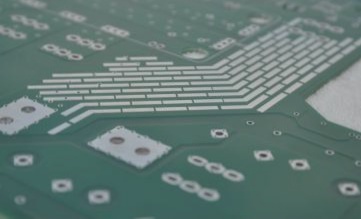Classification of PCB Circuit Board Reflow Curves
-
Saddle Type:
The curve starts from room temperature and gradually heats the board to the peak of the saddle at a rate of 1-1.5°C/sec. It then employs a slow rise or constant temperature approach to reach the end of the saddle at 150-170°C within 60 to 90 seconds. The primary function of this phase is to allow the PCB and components to absorb sufficient heat, ensuring internal and external temperatures equalize for the peak temperature. The peak temperature is approximately 240±5°C, with a TAL lasting about 50-80 seconds and a cooling rate of 3-4°C/sec, totaling around 3-4 minutes.
-
Saddleless Type:
The temperature increases linearly throughout the process at a rate of 0.8-0.9°C/sec, peaking at 240±5°C. The L-shaped curve should ideally be straight or slightly concave to prevent surface blistering on thick boards due to overheating. The first 2/3 of the heating phase should not exceed 150°C, with other parameters remaining consistent.
-
Long Saddle Type:

Latest Updates on PCB Reflow Techniques
-
1. Enhanced Saddle Profile for Soldering Multiple BGAs:
When soldering multiple BGAs, extending the saddle profile can help reduce voiding in the solder balls and supply sufficient heat to the ball’s base. This process involves a heating rate of 1.25°C/sec, reaching the first saddle at 120°C, maintaining that temperature for 120-180 seconds before sharply rising to the peak temperature.
-
2. Importance of Quality Mobile Profilers:
The quality and technique of mobile profilers are crucial for accurate reflow processes. These profilers can utilize 4 to 36 thermocouples, recording essential data such as heating rates, temperature differentials, peak temperatures, and key parameters for optimal performance.
-
3. Considerations for Larger PCB Circuit Boards:
In larger PCB circuit boards, the leading edge must warm up and cool down faster than the middle or trailing edge. Thermocouple wires should cover the four corners or edges for accurate temperature readings. Components sensitive to high heat should have thermocouple wires attached to define the reflow curve accurately.
Optimizing Reflow Soldering Process for PCB Assembly
- Using a thermometer to identify temperature distribution on the assembly board is crucial to prevent damage to heat-sensitive components and thick boards.
- For different solder paste specifications like SAC305 or SAC3807, ensuring proper heat absorption across all sections of thick multilayer PCBs is essential.
- Adjusting the reflow profile based on board size and component types can optimize production speed and quality.
- Understanding the composition of solder paste and its impact on fluidity, healing properties, and soldering quality is key to successful PCB assembly.
By fine-tuning reflow parameters such as conveyor speed, heat absorption time, and solder paste composition, manufacturers can achieve efficient and reliable soldering results while preserving the integrity of the components and PCBs.





